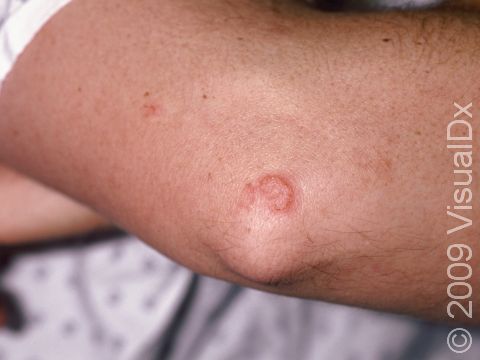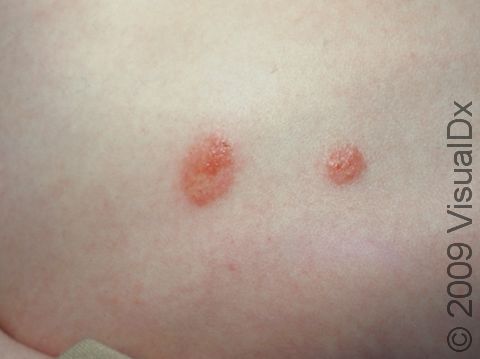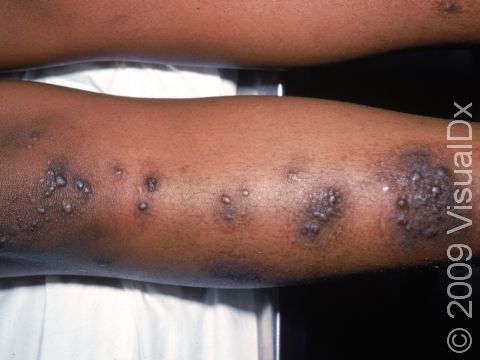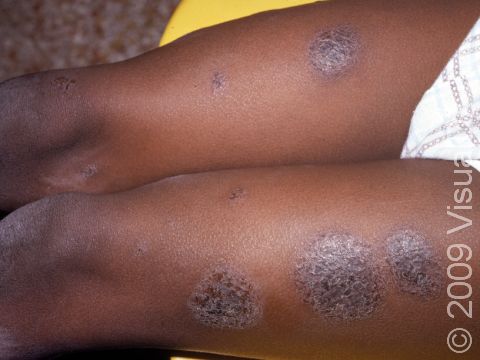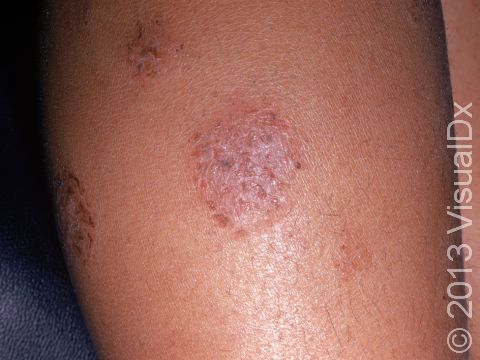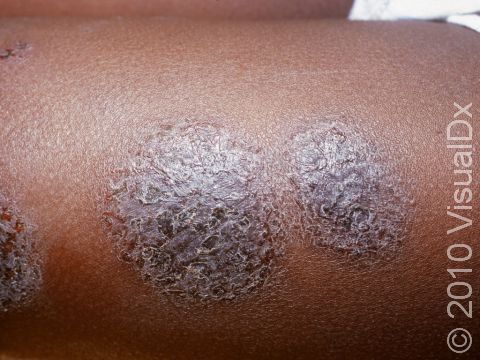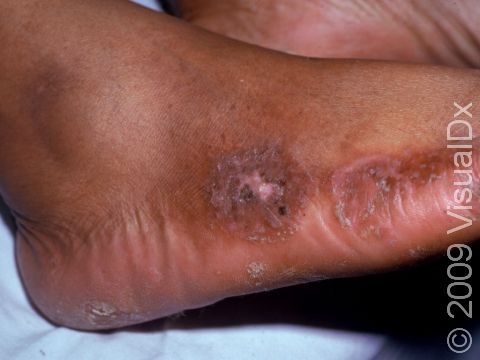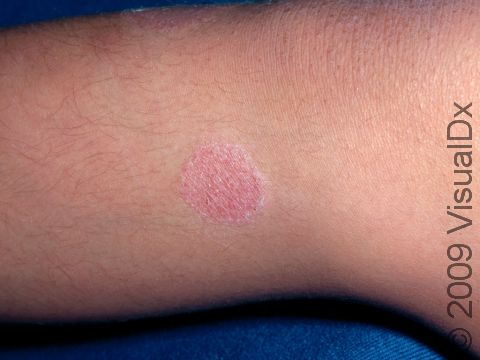Nummular Dermatitis
Nummular dermatitis is a specific form of eczema in which the rash forms coin-shaped lesions instead of the general patches of redness that characterize usual eczema. The round lesions are often red, scaly, and itchy. This particular form of eczema is easy to confuse with other diagnoses; sometimes the lesions look just like ringworm, but the treatment for these conditions is different. Just like with eczema, the cause of nummular dermatitis is not well understood, but it seems to be more common in people who have allergies, those who live in cold or dry regions, and in people who have sensitive skin in general. The treatment is similar to that for eczema: keep the skin hydrated by reducing bathing and applying frequent moisturization. A doctor might also prescribe a steroid cream to help with the healing. Nummular dermatitis, as well as the other eczema-type rashes, is not contagious.
Who's At Risk?
Anyone of any age can develop nummular dermatitis. Those who have other allergies, asthma, or sensitive skin are generally more likely to develop any of the eczema-type rashes.
Signs & Symptoms
Nummular dermatitis is most commonly found on the trunk of the body and/or the arms or legs (extremities). Round or coin-shaped, pink to red, scaly, raised areas are seen, often with small cracks or breaks in the surface of the skin.
Self-Care Guidelines
Maintaining healthy skin is very important for sufferers of nummular dermatitis.
- Moisturizing skin care routines are essential.
- Non-soap cleansers such as Cetaphil® or moisturizing soaps such as Dove® are recommended.
- Thick moisturizers such as petroleum jelly, Aquaphor® ointment, Eucerin® cream, CeraVe® cream, and Cetaphil cream should be applied to damp skin after daily bathing.
- Attempt to minimize exposure to heat, humidity, detergents/soaps, abrasive clothing, chemicals, smoke, and stress.
- Fragrance-free laundry detergent may be beneficial.
- Keep the home humid with a humidifier or by setting bowls of water out, especially in the bedroom.
Treatments
Your physician may:
- Recommend the above self-care measures.
- Prescribe medium- to high-potency topical steroids to apply to the affected areas twice daily.
- For extensive disease, light therapy with ultraviolet B may be recommended.
- Oral antihistamines may be prescribed to help relieve itching.
- If the area becomes infected, oral or topical antibiotics may be prescribed.
Visit Urgency
You should seek medical care if there is a lack of response to self-care measures or the condition worsens or flares.
References
Bolognia, Jean L., ed. Dermatology, pp.218-223. New York: Mosby, 2003.
Freedberg, Irwin M., ed. Fitzpatrick’s Dermatology in General Medicine. 6th ed, pp.1194-1196. New York: McGraw-Hill, 2003.
Last modified on August 16th, 2022 at 2:45 pm

Not sure what to look for?
Try our new Rash and Skin Condition Finder
